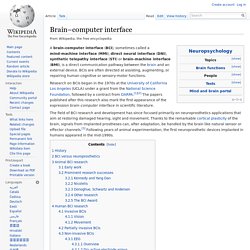

Wilhelm Reich. Wernher von Braun. Wernher Magnus Maximilian, Freiherr von Braun (March 23, 1912 – June 16, 1977) was a German rocket engineer and space architect.

He was one of the leading figures in the development of rocket technology in Germany during World War II and, subsequently, in the United States. Measurement science and standards. Accurate measurement underpins industrial success across all sectors of the economy.

It is therefore essential to mobilize highly credible metrology infrastructure and intelligence. NRC Measurement Science and Standards meets this demand with world-class facilities, technologies and staff, tackling challenges in innovation and providing first-rate metrology capabilities. What we offer. NICT-National Institute of Information and Communications Technology. Information analytical centre of GLONASS and GPS controlling.
S Goddard Space Flight Center. Making Science Visible. Hans Berger. Nerve-connected prosthetics to make artificial limbs feel real. DARPA is developing a neural interface microsystem for prosthetics that would improve amputees’ experience by giving them sense of touch and better control over artificial limbs.

The Hand Proprioception and Touch Interfaces (HAPTIX) programme, run by the Biological Technologies Office of the US Defense Advanced Research Projects Agency (DARPA) aims to add the sense of touch and better mind-body coordination to existing prosthetics. Proprioception – the sense of the relative position of various body parts – is something that has so far been completely missing in the prosthetics technology. As a result, amputees usually perceive their artificial limbs as something alien, rather a tool than an integral part of the body. Therefore, many of them don’t feel comfortable wearing the fake limbs and put them aside as soon they complete the needed task. IET Faraday - Home. Bibliographic database. A bibliographic database may be general in scope or cover a specific academic discipline.

A significant number of bibliographic databases are still proprietary, available by licensing agreement from vendors, or directly from the indexing and abstracting services that create them.[2] Many bibliographic databases evolve into digital libraries, providing the full-text of the indexed contents. Others converge with non-bibliographic scholarly databases to create more complete disciplinary search engine systems, such as Chemical Abstracts or Entrez.
History[edit] Prior to the mid-20th century, individuals searching for published literature had to rely on printed bibliographic indexes. See also[edit] References[edit] Jump up ^ Feather, John; Sturges, Paul, eds. (2003). Portal:Technology. Radar Will Scan NYC Park For A Buried Luxury Bomb Shelter From 1964. Is the Underground Home still underground?

The New York City Parks Department doesn't think so, but others do. University Scientists Capture Raw Footage of UFO Showing Up At Their Observatory in Norway. “There is nothing new to be discovered in physics now.

All that remains is more and more precise measurement.” This statement (worldview statement) was by Lord Kelvin in 1900, which was shattered only five years later when Einstein published his paper on special relativity. The new theories proposed by Einstein challenged the current (at that time) framework of understanding. This forced the scientific community to open up to an alternate view of the true nature of our reality.
Even Einstein Could Not Have Imagined Technology Used to Directly Detect Gravitational Waves. Physicists were thrilled this week at news of strong evidence for gravitational waves, perturbations of the early universe that confirm it expanded rapidly following the big bang during a period called inflation.

To gain a different perspective on these findings, Carsten Koenneker of Scientific American’s German-language edition Spektrum interviewed Bruce Allen, director of the Max Planck Institute for Gravitational Physics, about the BICEP2 experiment that detected these long-sought waves. You study gravitational waves. Brain–computer interface. A brain–computer interface (BCI), sometimes called a mind-machine interface (MMI), direct neural interface (DNI), synthetic telepathy interface (STI) or brain–machine interface (BMI), is a direct communication pathway between the brain and an external device.

BCIs are often directed at assisting, augmenting, or repairing human cognitive or sensory-motor functions. Research on BCIs began in the 1970s at the University of California Los Angeles (UCLA) under a grant from the National Science Foundation, followed by a contract from DARPA.[1][2] The papers published after this research also mark the first appearance of the expression brain–computer interface in scientific literature.
The field of BCI research and development has since focused primarily on neuroprosthetics applications that aim at restoring damaged hearing, sight and movement. History[edit] Cyborg. A cyborg (short for "cybernetic organism") is a theoretical or fictional being with both organic and biomechatronic parts.

The term was coined in 1960 by Manfred Clynes and Nathan S. Kline.[1] D. The Canadian Military Journal Vol 13. No 4. Credit: DND photo AR2011-0200-04 by Corporal Tina Gillies Soldiers on operations, Afghanistan by J.

A bionic prosthetic eye that speaks the language of your brain. On the grand scale of things, we know so very little about the brain. Our thick-headedness isn’t quite cosmological in scale — we really do know almost nothing about the universe beyond Earth — but, when it comes down to it, the brain is virtually a black box. We know that stimuli goes in, usually through one of our senses, and motor neurons come out, but that’s about it. Hackers backdoor the human brain, successfully extract sensitive data.
ACM Digital Library. Penn State-A Public Research University Serving Pennsylvania and the Global Community. CiteSeerX. College of Information Sciences and Technology.